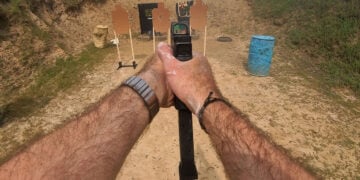I’m sure by now most of our readers are aware that the United States is in the midst of an epidemic of opioid drug abuse. Derived either naturally or synthetically, opioids produce morphine-like effects and have a variety of legitimate medical uses, chiefly as painkillers. They’re also very popular as recreational drugs—heroin is an opioid—and prescription opioid are often misused as such. Opioid abuse has been skyrocketing in the US for years now; deaths from opioid overdoses have quadrupled since 1999 and 2015 was the deadliest year on record for drug overdoses. Nearly 4,000 people start using opioid relationally every day and in December of last year the CDC reported that those numbers continue to rise.
I live in the city most affected by this—Wilmington, North Carolina leads the nation in opioid abuse; I see what these drugs can do to people every day. I can tell you based on both my personal experiences and the research available that the opioid epidemic is in part fueling increases in other forms of crime. Folks concerned for their own safety and self-defense need to understand this relationship, what sorts of crimes they can expect, and what approaches they can take in order to keep themselves safe.
First off, while there’s some correlation between a rise in opioid abuse and a sharp rise in violent crime, the fact is that correlation doesn’t always prove causation—that is, just because two things happen at the same time doesn’t mean one is causing the other. Most law enforcement agencies around the country report that opioid abuse most likely leads to a rise in property crime: burglary, petty theft, and the like. People need money to pay for their fix, and addiction makes it very hard to hold a job.
Toward that end, we all need to take steps to ensure that our homes, businesses, and automobiles are secure. If you’re living in an affected area, you may want to go beyond the basics: businesses may be well advised to make sure that there’s no case or valuables on premise after business hours. Homeowners may want to double down on keeping valuables out of sight—eg, bring that new flat screen in through the garage and dispose of the box elsewhere. Don’t give some addict a reason to pick your house.
We’ve talked extensively about the importance of first aid and emergency medical skills. If you live in an area in which opioid abuse is especially prominent, you may want to learn more about the signs of addiction and the correct medical responses to both opioid abuse and an overdose. If legally allowed to do so, you may wish to learn how to use an naloxone/Narcan auto injector in order to treat a suspected overdose. Programs exist around the nation to help you do so, and I encourage you to look into them if you’re so inclined. Making these materials part of your medical kit and emergency medical training may very well save a life.
Speaking of saving lives: while opioid abusers tend to content themselves with stealing enough to maintain their addiction, a community dealing with this epidemic may see a rise in other forms of crime as the downward spiral begins. These can include violent crime, including robbery, assault, and home invasion. If you live in an affected area I suggest you train hard, train regularly, and keep your gun ownership/CCW habits discreet. If you avoid becoming a target—and are well prepared to deal with trouble if it comes looking for you—you’re well ahead of the game.
In conclusion, while I hope you do take the steps to protect yourselves, I will also ask that you refrain from judging folks dealing with an opioid abuse. An absurd number of them were initially prescribed these drugs by a physician, and their addiction isn’t fully their fault. Most communities fighting the opioid epidemic have ways in which you can volunteer your time to help, and I hope some of you will become part of the solution.
God willing this will pass soon, but until then stay safe out there.









